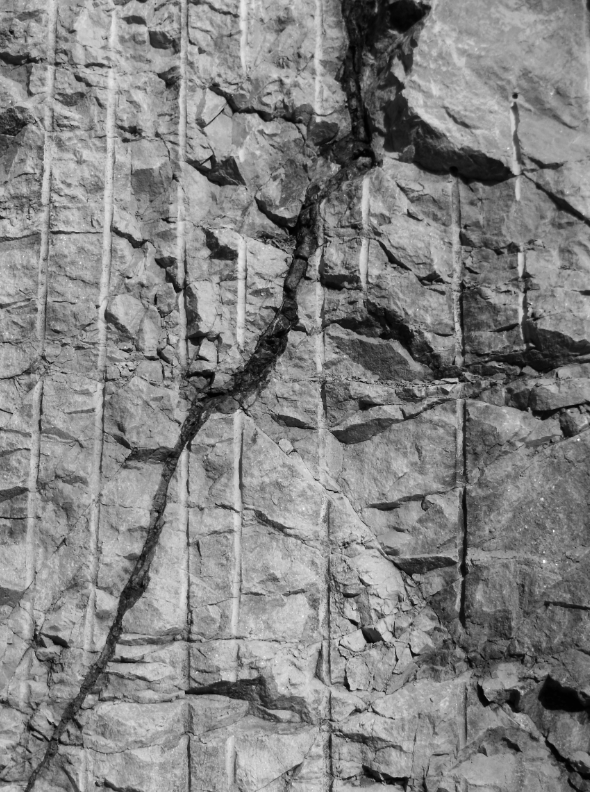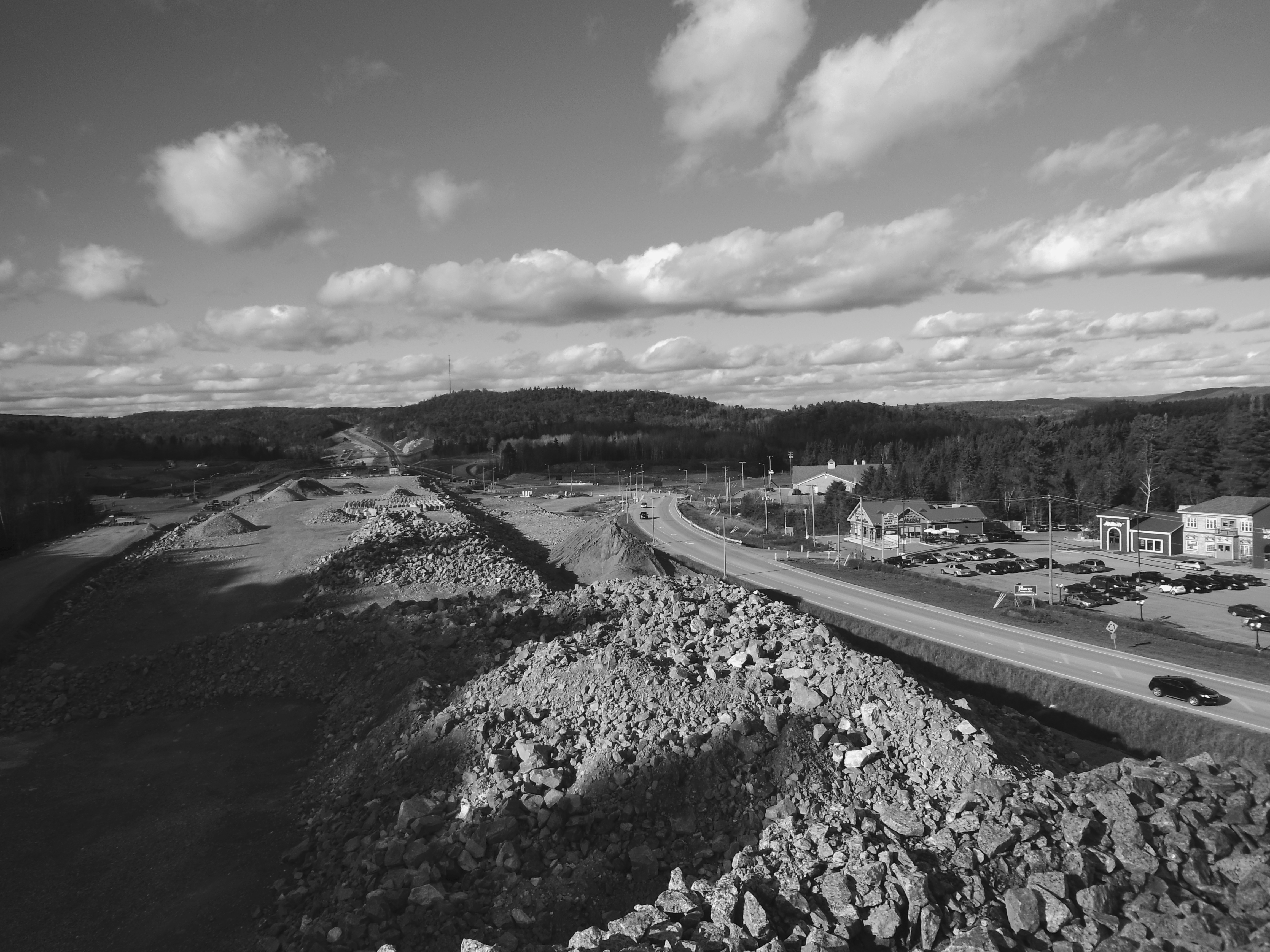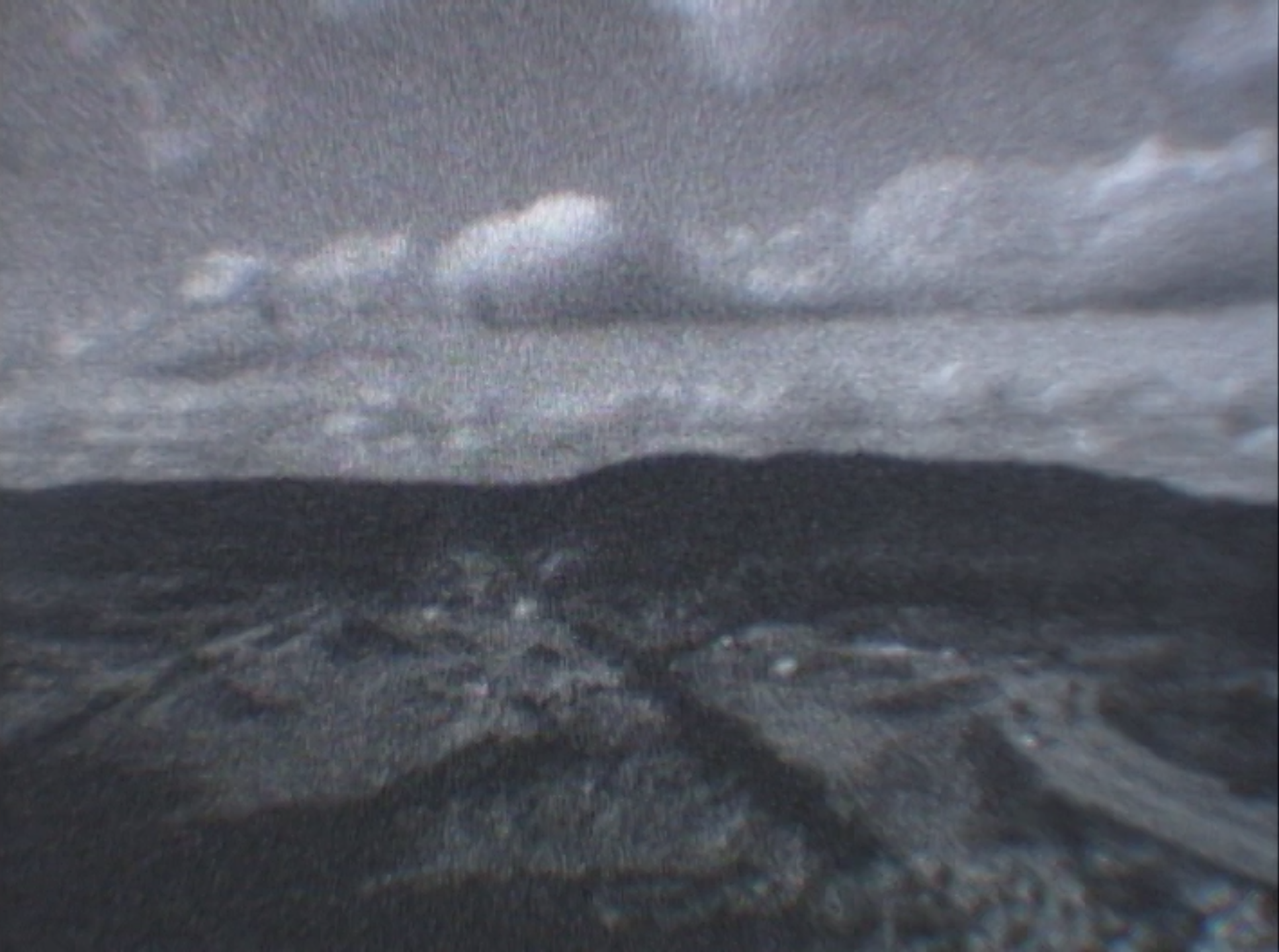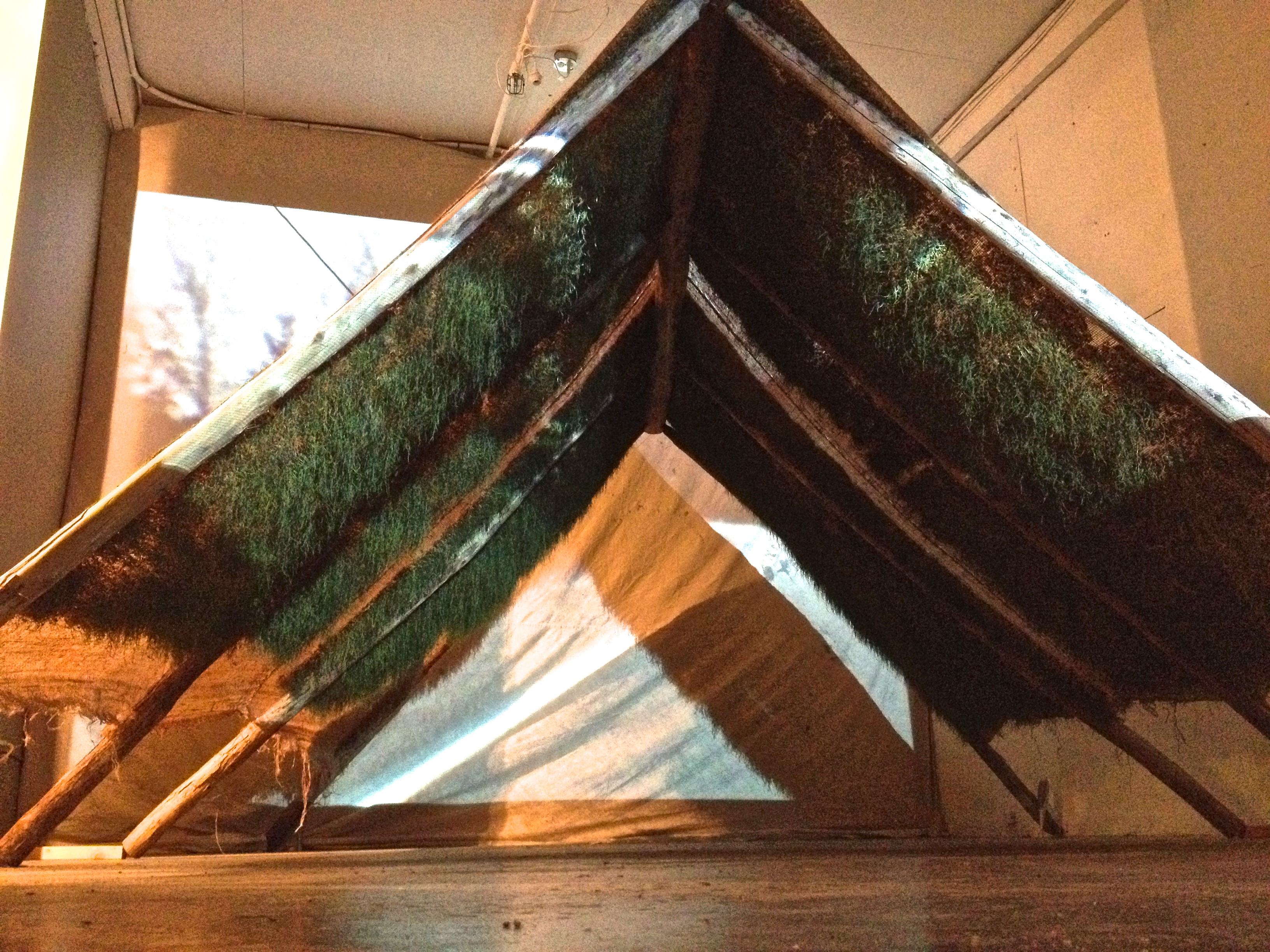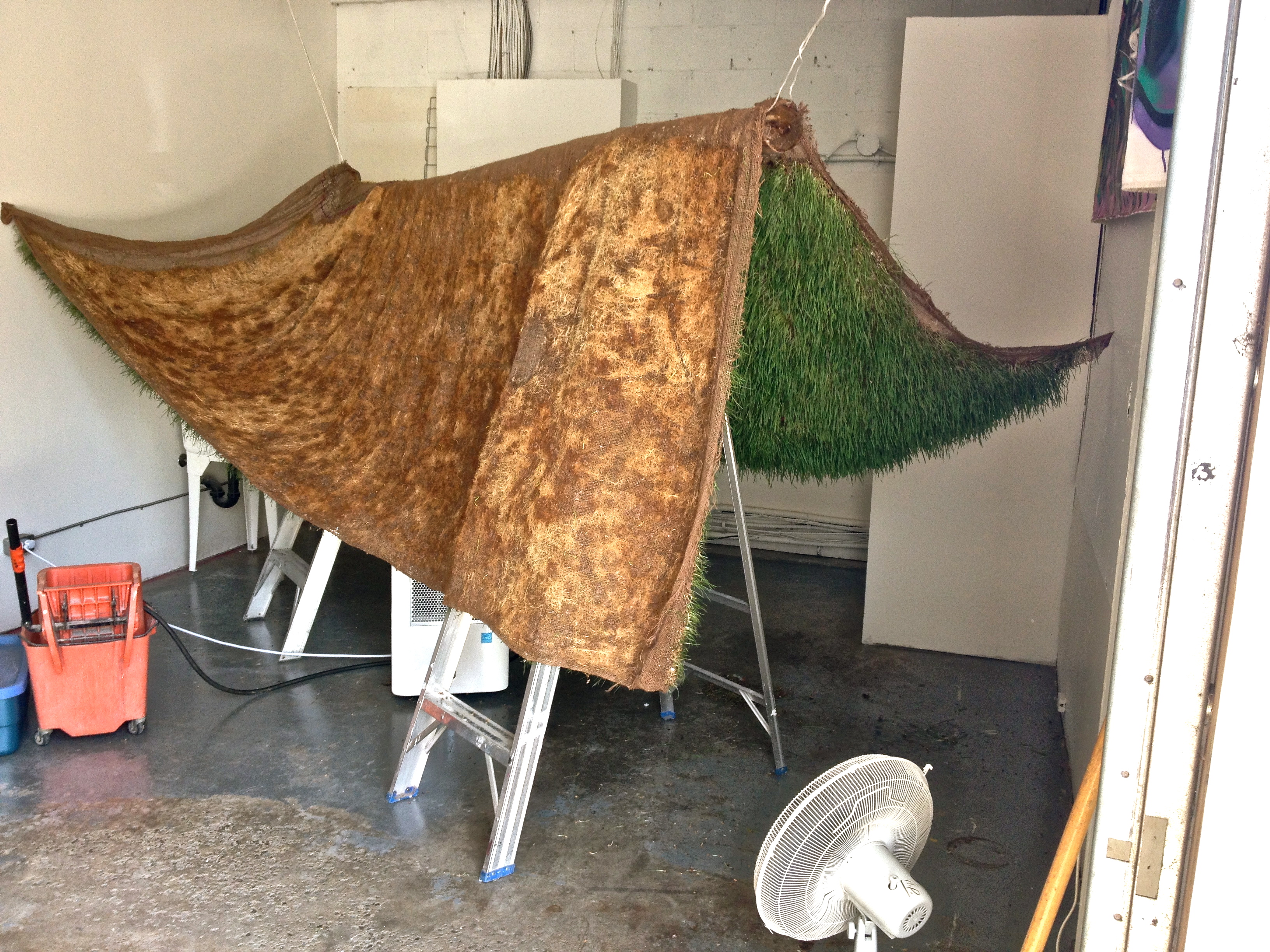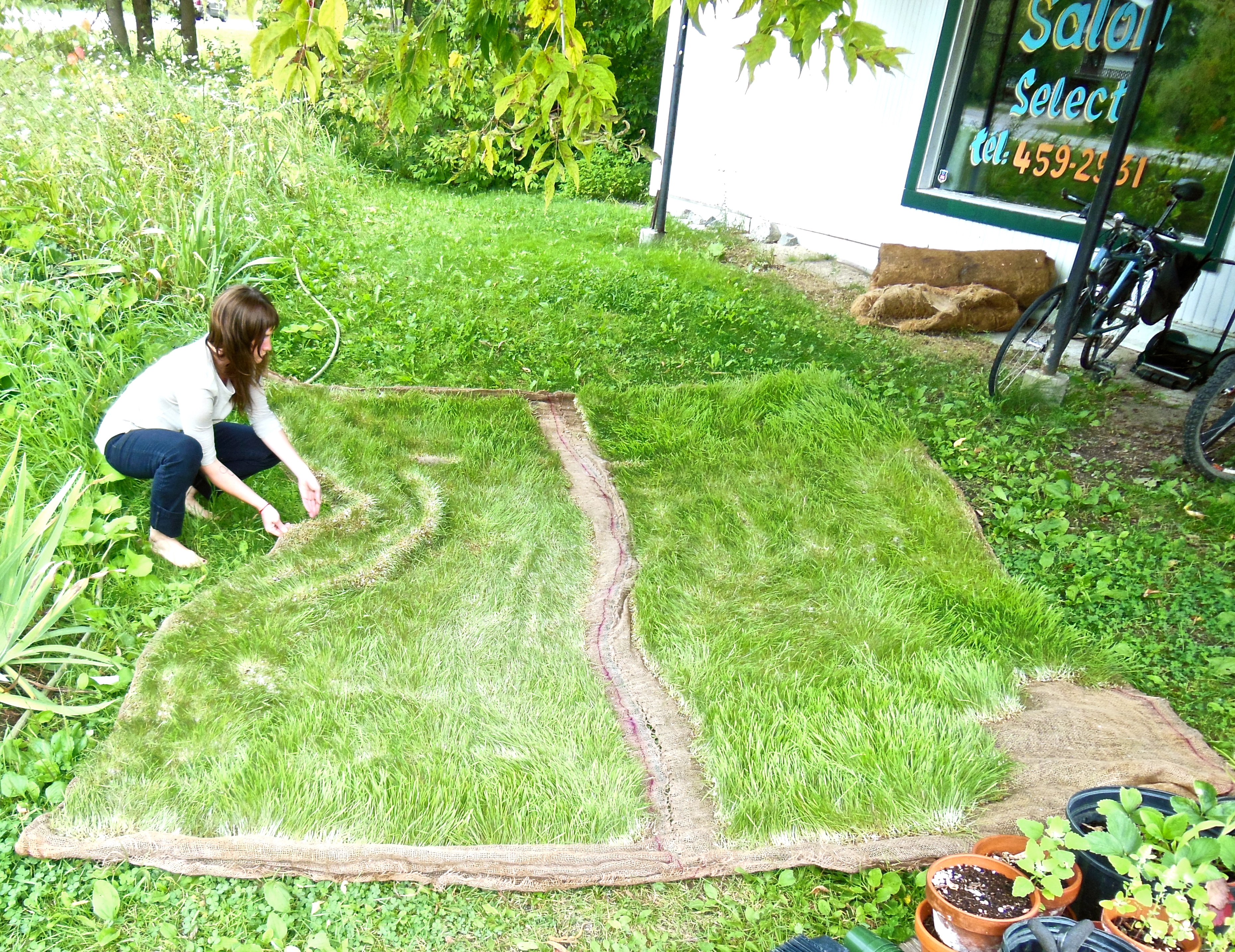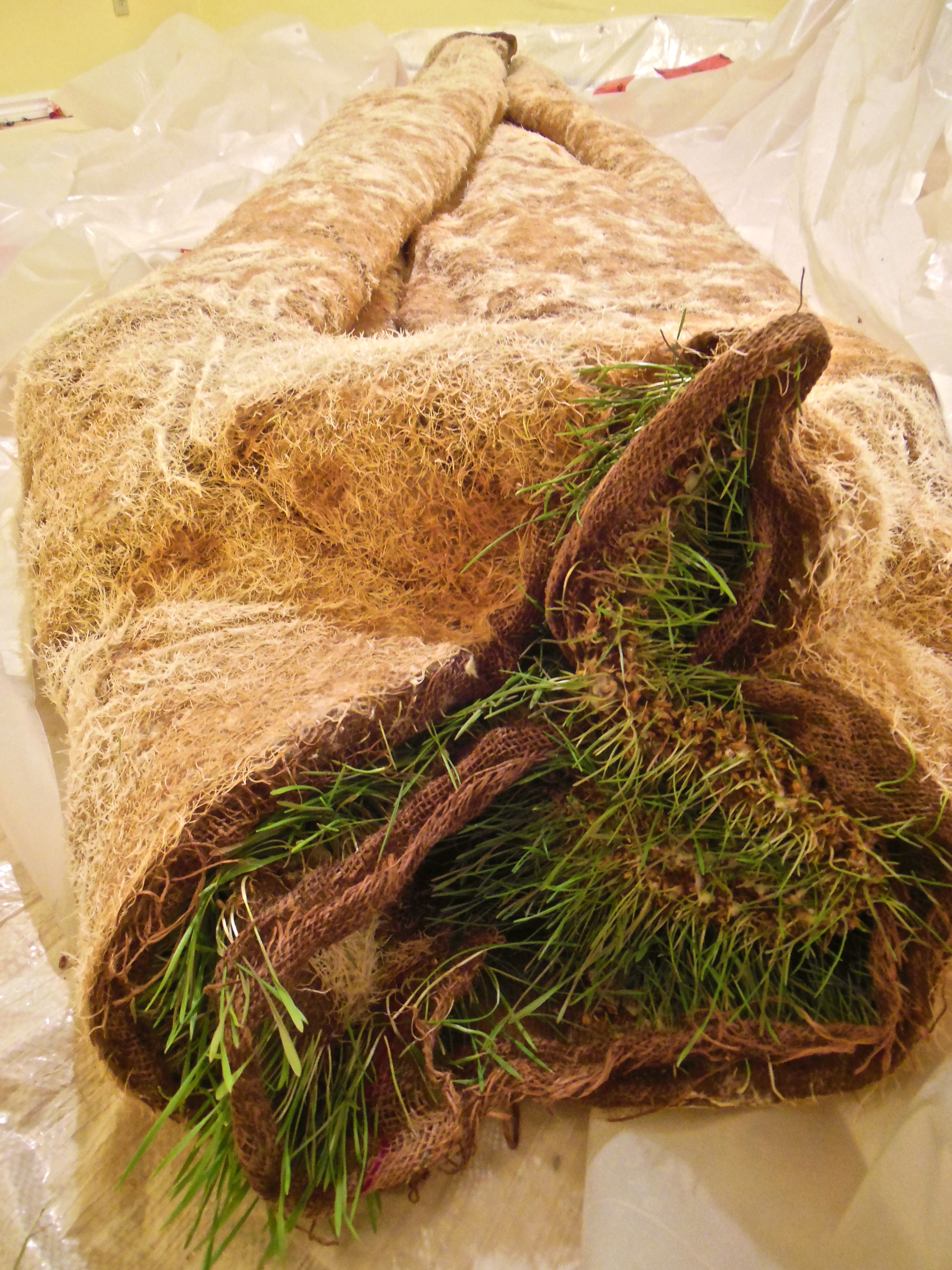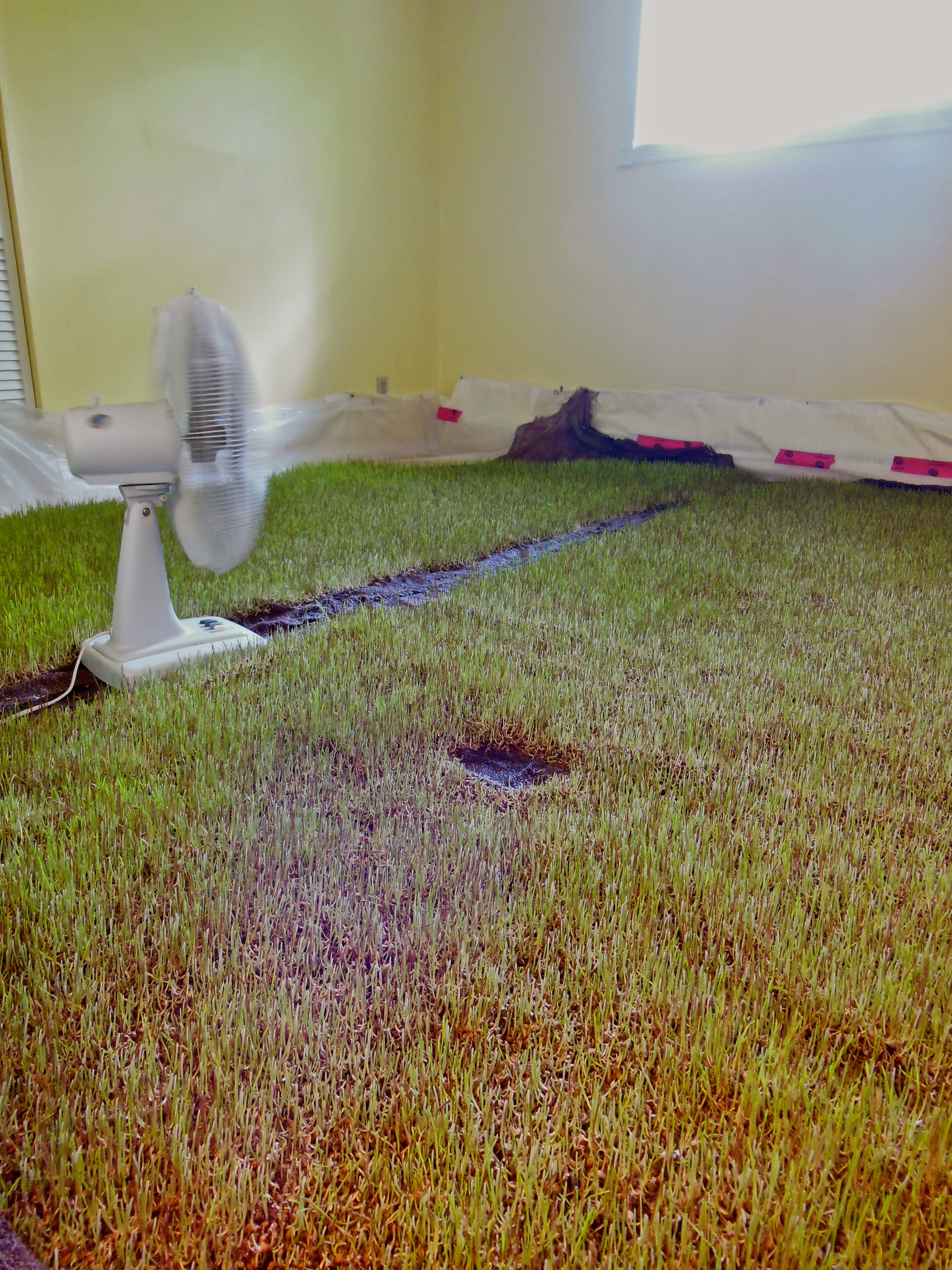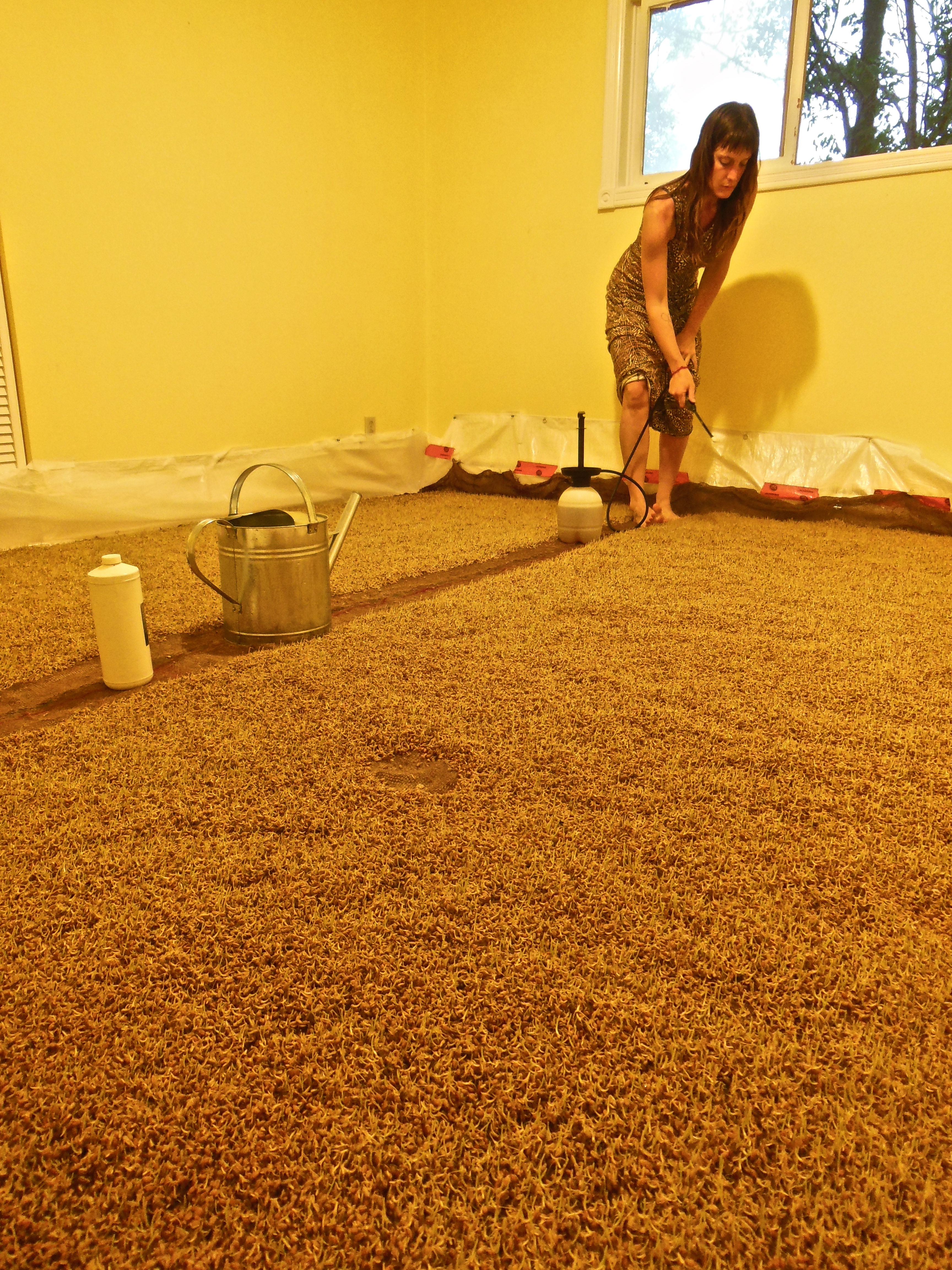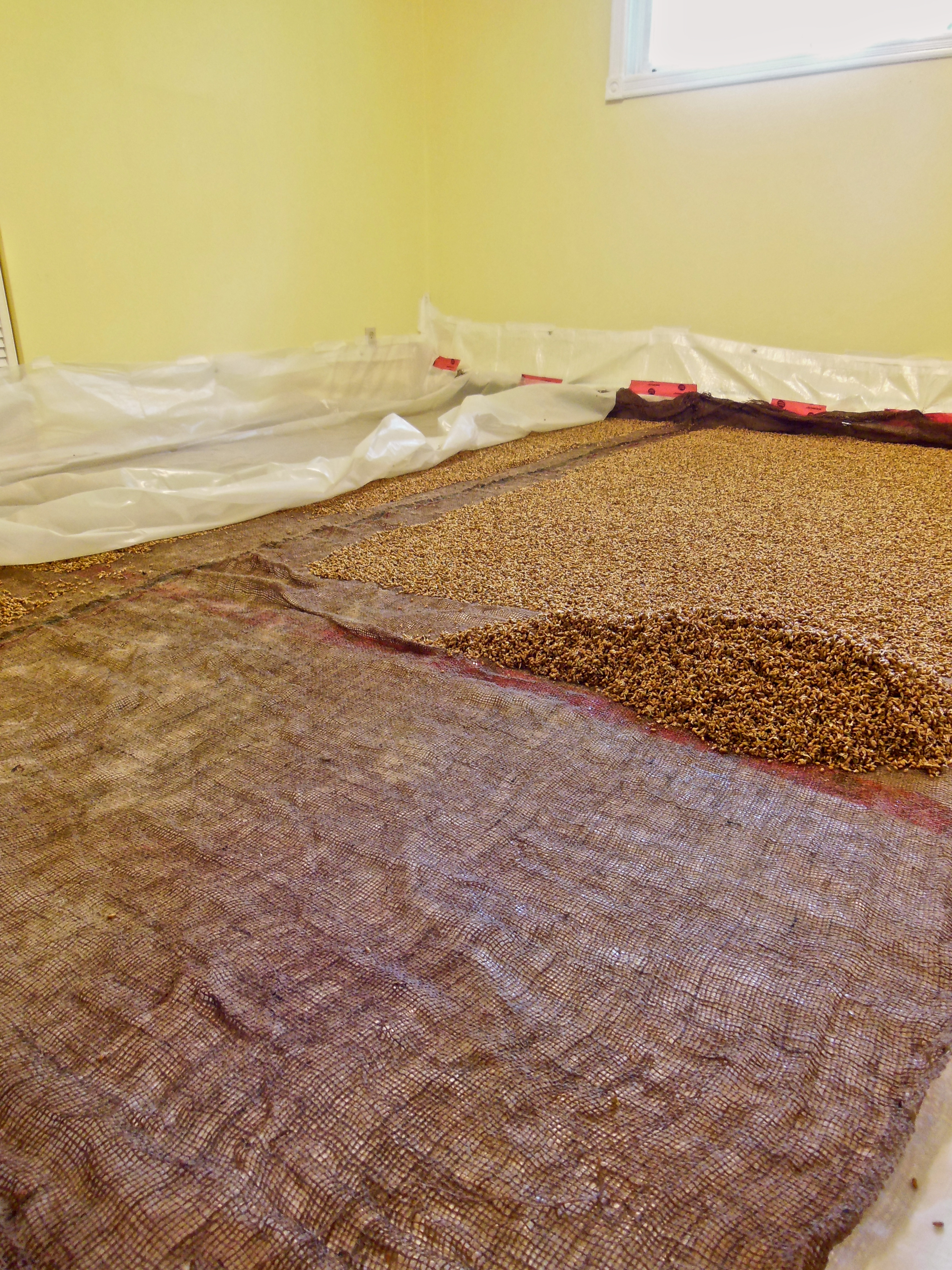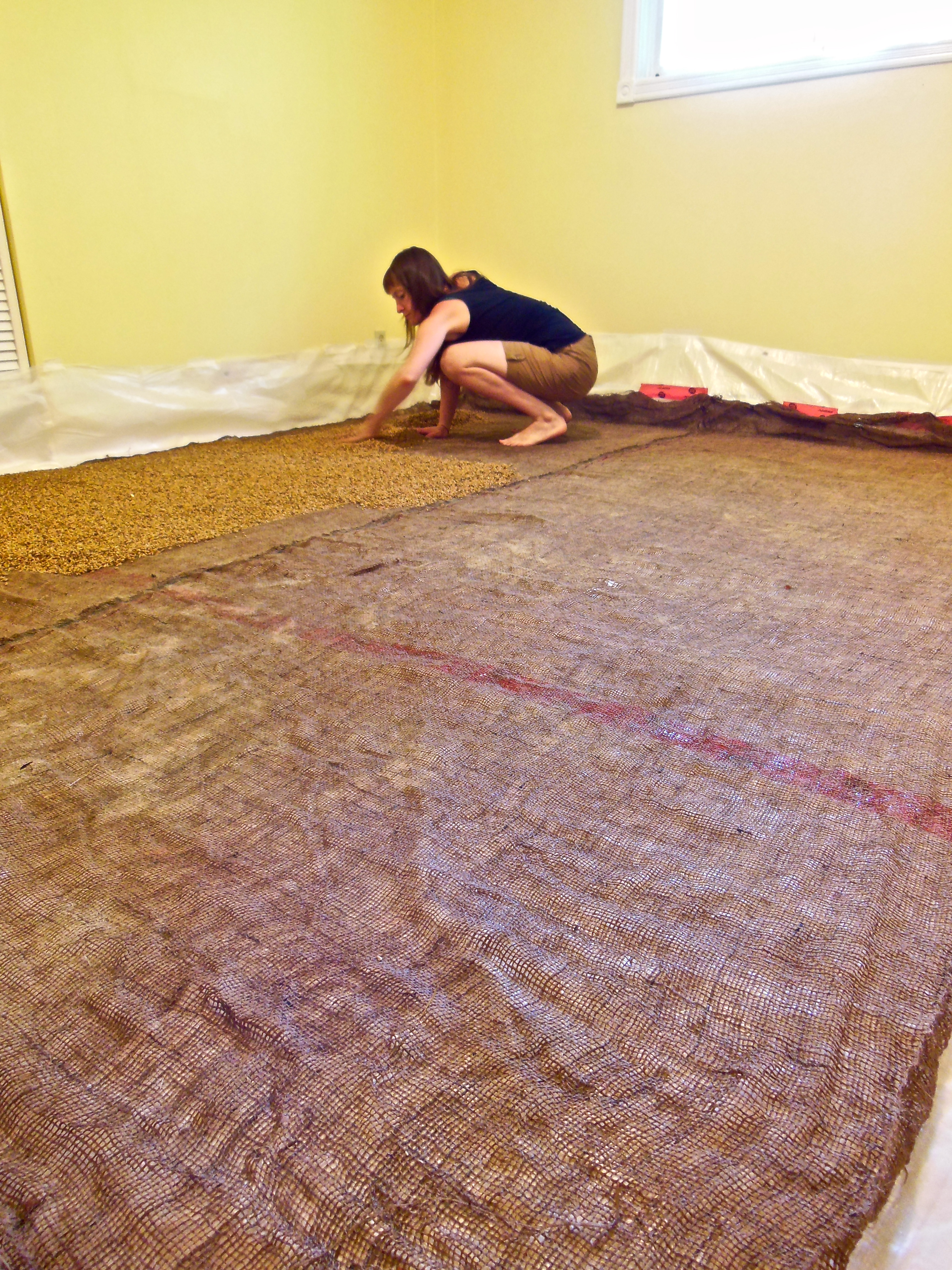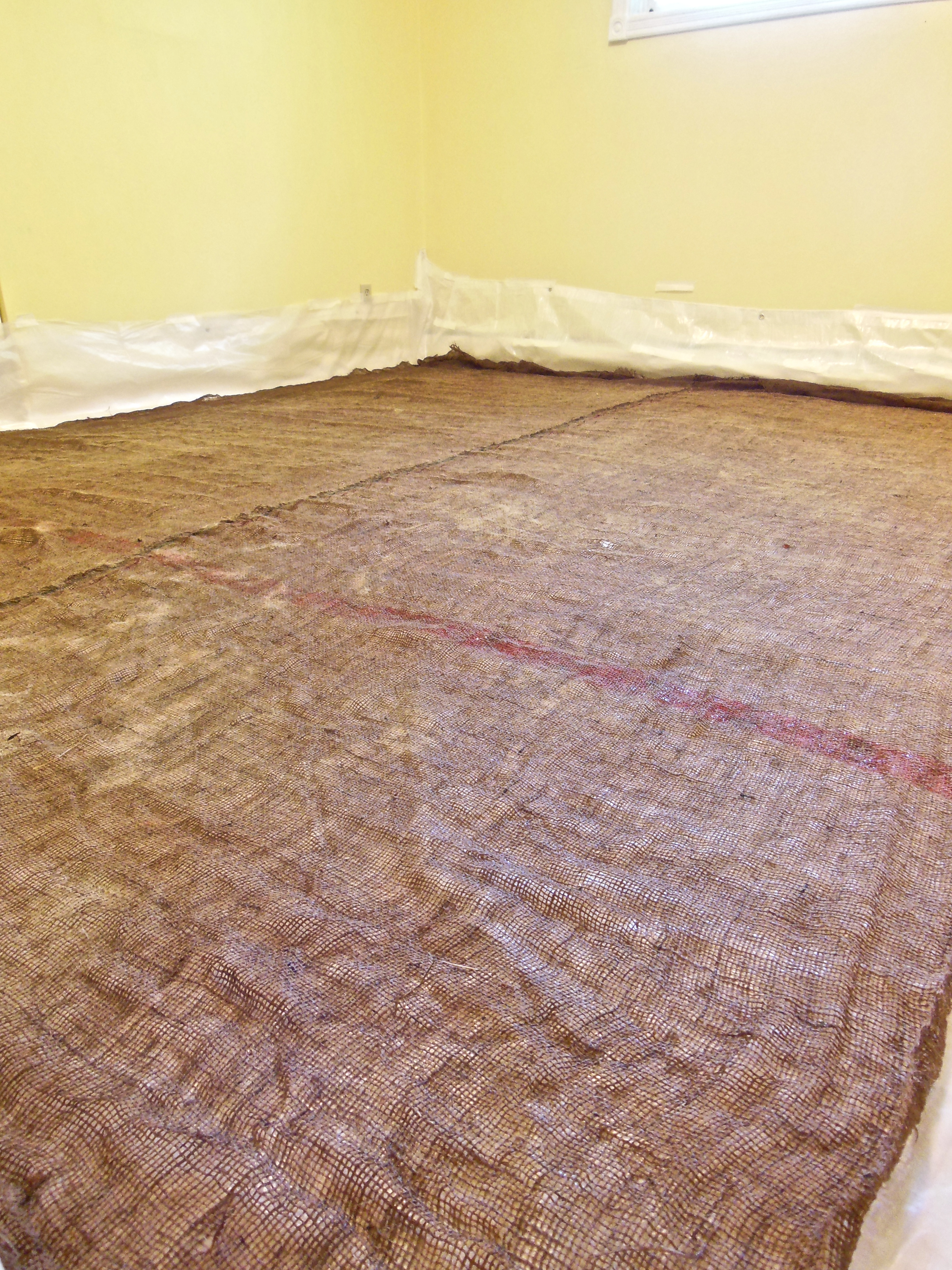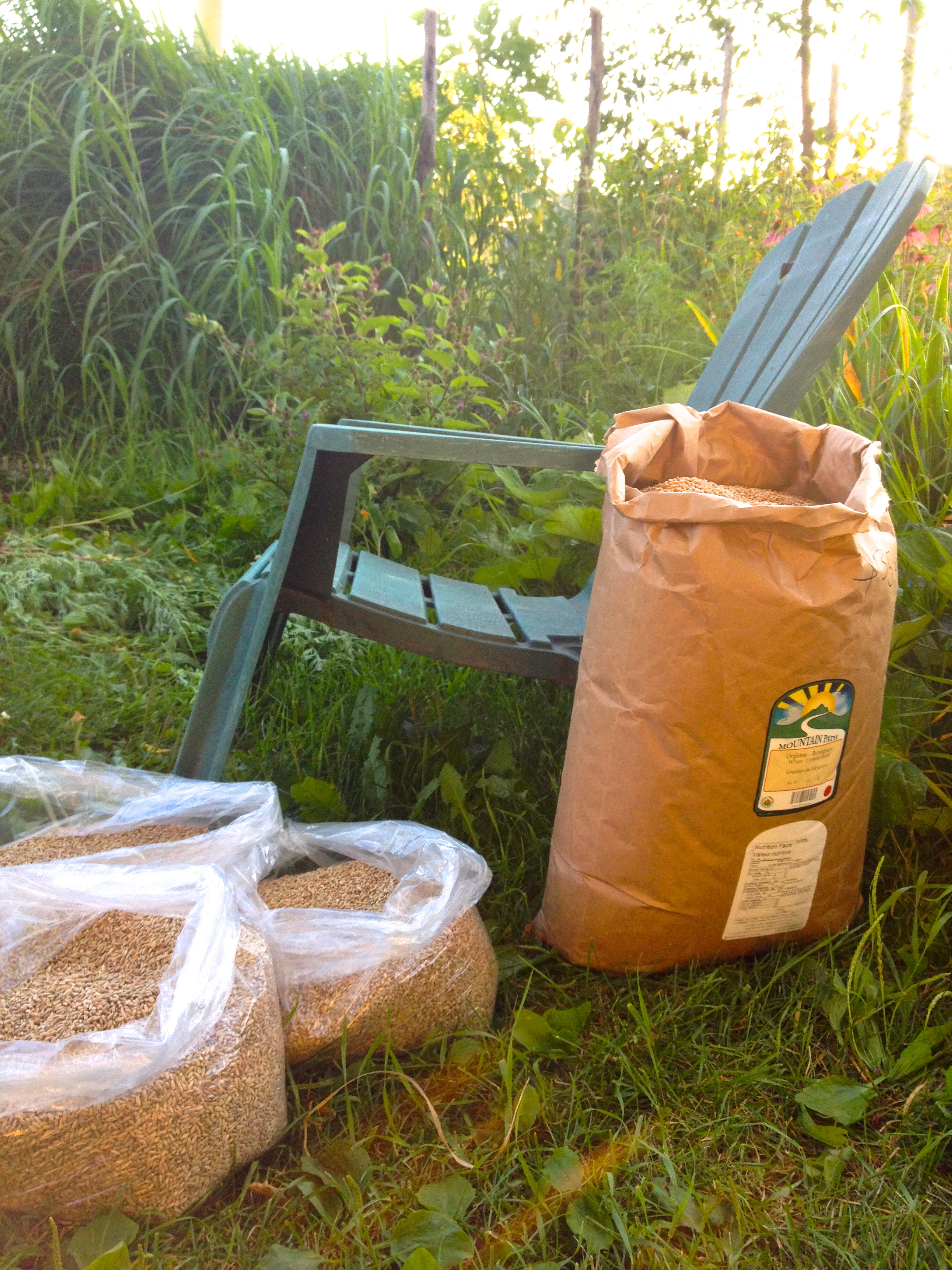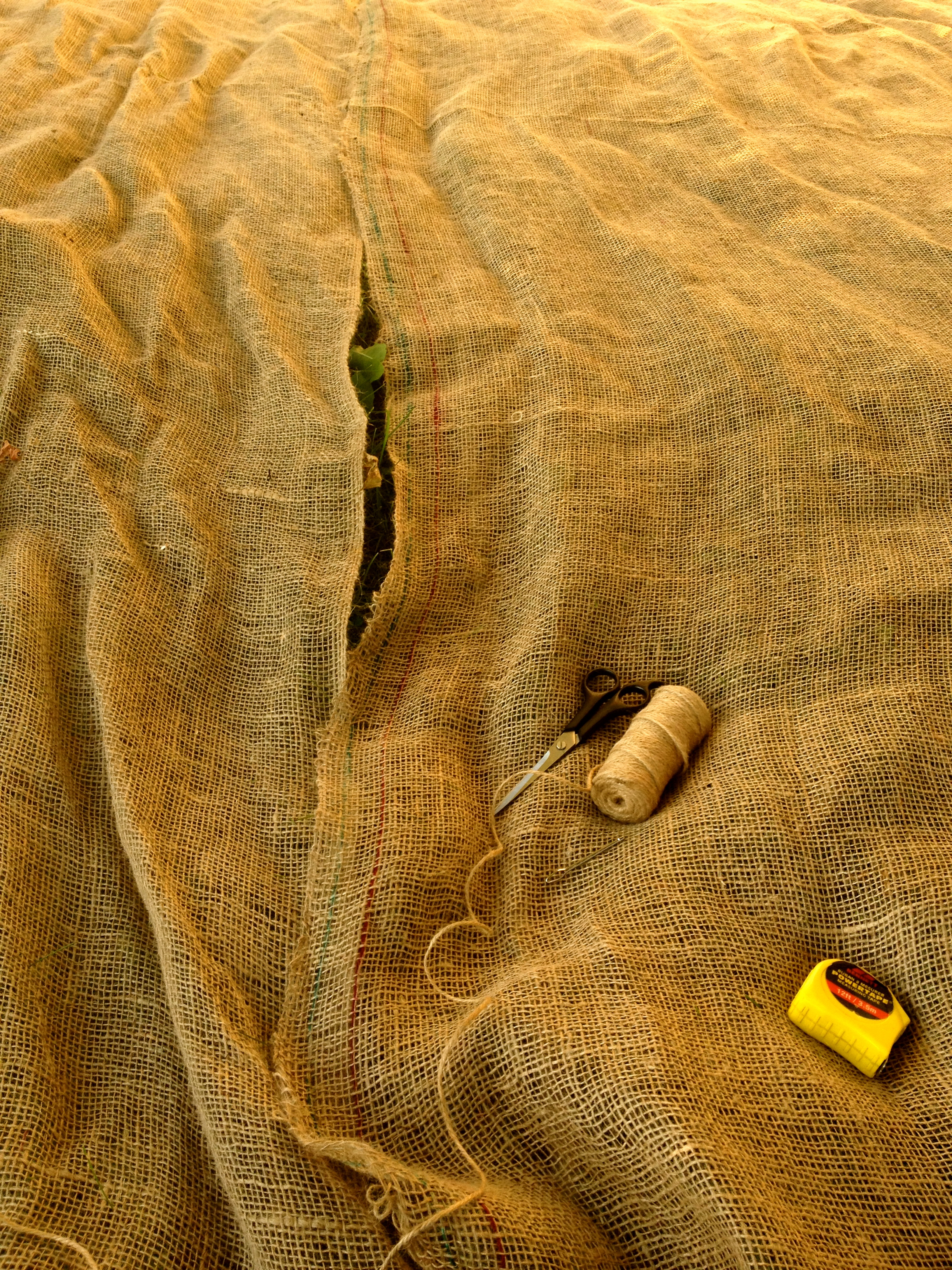Multi-media installation using burlap, rye and wheat, Super 8 mm film projection, soundscape. Material Witness: Art, Activism, and Fibre at Gallery 101, Ottawa, Canada, 2014.
Under Our Highways pays homage to the Gatineau River and our relationship to it. It is part of an unfolding body of work that looks at the pre-colonial history and bio-region of the Gatineaus — unceded, unsurrendered Algonquin territory. The film sheds light on the River’s ancestral and contemporary trade routes, while understanding the impact of highway construction, development and settler culture on the local waterways and the Ottawa River watershed. As a non-Indigenous woman from this place, I’ve grown attached to the Gatineau Hills and consider it to be my home region. Over 25 years, I’ve seen the landscape change and the population grow. I’ve observed how attachment to and responsibility for the land often ceases to exist beyond one’s property line. With the arrival of Highway Five North, our numbers will continue to grow — developments such as mining and forestry included — and likely faster than we think. The history and future of this body of water has inspired many local citizens to bridge the essential and on-growing ties between non-indigenous and indigenous communities, in an effort to recognize the importance of these waters and to protect against their ultimate exploitation and erasure.
Highways is a response to the intersecting and overlapping stories of people working to protect our waters across the globe. I am trying to uncover histories that I was never told: The Super 8mm film footage in this installation tells my story about the Gatineau River — Te-nagàdino-zìbi — I grew up on, and returned to in 2011. This project is a gesture of solidarity with other movements, like Paddling for Our Waters*. It celebrates the interconnection of organic and social systems just as it honours forms of protest that are local, creative and tangible, in places that are dear to us. The living tapestry is made of grown and drying wheat and rye, and the film is projected onto their root system’s surface. The tapestry — before it was installed as a tent — progressed through germination, life, death over 10 days and is composed of over 50,000 seeds. The cedar structure recalls the tents used at the onset of the Occupy movement to shelter protesters, reclaim common space and take action towards a larger social movement. Idle No More’s actions have continued in this vein. Like people gathering, the thousands upon thousands of seeds inhabit space with their physical presence and rely on one another for warmth, growth, momentum, in quiet homage to the power of collectivity.
* On June 21, 2013, Kitigan Zibi Anishinabeg members and Youth took a canoe excursion using their traditional travel route along the Gatineau River as a demonstration and to place attention on the need to protect water and eco-systems along the Ottawa River watershed. The canoe trip began in Wakefield, Quebec and arrived to Victoria Island in Ottawa, Ontario for the summer Solstice.
Rivers as Highways: Beginnings
The installation “How We Gather, III: Under Our Highways, Rivers Flow” was created with an artistic development and production residency made possible through the Dennis Tourbin Fund for Emerging Artists, at the Community Foundation of Ottawa. The fund seeks to encourage emerging artists to carry out creative works of art that cross disciplines and traditional boundaries. It also seeks to promote the presentation of art outside of the gallery walls into the public arena, reaching new audiences and engaging the community.
